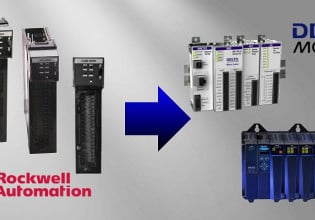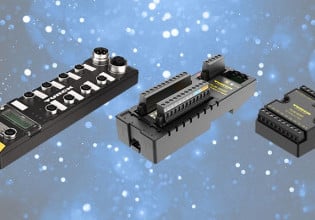Differences and Relationship Between IT and OT in Industrial Facilities
We’re all familiar with information technology, or IT. The computer systems, hardware, internet, and various software we use in our own homes and offices are mostly IT. But when it comes to industrial workplaces, the rules are different.
The technological advancements in the past couple of decades have helped information technology (IT) hardware and applications to pervade all aspects of our everyday life. IT is capable of capturing all information in digital format - perfect for pictures, documents, and sharing videos of cats. But in the analog world we live in, the bulk of information created in our industrial environments is of an analog format.
Origin of Operational Technology (OT)
Though the majority of data was analog, there was no scalable method of collecting and processing this real-world information. Pen and paper were historically the most common tools to record operational information in industries. Later, digital load devices and instrumentation were developed - instrumentation that converts the analog data into a storable digital representation. Such devices can handle both digital inputs as well as digital outputs to those load devices. This meant that IT, which can handle digital information, can now be used to handle operational information.
This gave rise to the term ‘operational technology’ (OT). According to Gartner, "Operational technology (OT) is hardware and software that detects or causes a change, through the direct monitoring and/or control of industrial equipment, assets, processes, and events". Operational technology can be construed as a subset of information technology that focuses on industrial applications. General IT does not necessarily have any operational implications. But OT is that branch of IT that is always concerned with operational activity.
Figure 1. Although all three devices may have network switching capabilities, industrial devices often differ from home and office equipment in ruggedness, power supply, and mounting style options.
The distinction between IT and OT
Let us try to make a distinction between IT and OT with the help of some examples. A law firm uses computers and software to manage tasks. The information of the firm is stored on local computers (servers) and cloud networks. They use a wide range of software to manage their accounting, human resources, finances, and other clerical tasks. The law firm relies on IT. The software systems they use do not have any physical interaction with the operation.
In contrast, a manufacturing facility using technology in daily operations is completely different. Their hardware and software systems need to capture information from physical sensors on the factory floor to perform tasks. Additionally, IoT devices often capture various metrics concerning factory operations. Analytical software, often hosted on a cloud computer, analyses the data to generate actionable insights into the factory operations. This is then used to change operational characteristics. The use of technology on the factory floor has immediate, major physical operational implications.

Figure 2. Both devices are capable of receiving sensor inputs, controlling loads, and sending data to the internet for logging and analysis. Although both are in the OT space, the ruggedness of a PLC is justification for its foothold throughout industry.
Similarly, the Wi-Fi networks in our homes help to connect our computing devices to the internet. This helps to transfer information across the globe. This is an example of IT as the technology has no physical implications in our homes. This changes when the Wi-Fi network is used to connect smart devices in our homes. This could be smart home security, smart lamps, smart appliances, or other smart devices, many of them being DIY projects and IoT kits. The home Wi-Fi network can now be used to turn on lamps, refrigerators, your front door, etc. This has physical operational implications. It would be fair to say that the Wi-Fi network in that home has become an operational technology system.
Some technology sub-systems used in a factory are indeed purely IT. The shop floor facing systems, including manufacturing execution systems (MES), automation systems, computerized maintenance management systems (CMMS), are all examples of OT. They use operational data to impact the operations of the factory. But at the same time, that same company uses accounting software, payroll management systems, etc, to manage many tasks. These do not have any physical implications. They would not be considered OT, but would be considered purely IT, leading to a difference in what employees may be needed to handle various business segments.
IT vs. OT employees
We are most likely familiar with IT employees who work for technology companies. They work with programming languages to develop software and maintain digital applications. The requirements will certainly include training and education in computer science and networking applications. Employees working with OT need different skill sets, including an operational understanding of the factory and machines in them.
In most instances, employees in OT use software systems that are founded on typical programming languages. But they need not know how to code to work with the software themselves. SCADA systems use ladder diagrams, which look more like electrical prints, to connect the various sub-systems. OT employees working with the software need to know the basics of ladder diagrams and how to accomplish that on the software. They need not know how to code, but should always be willing to learn the intricacies of the software they are using.

Figure 3. Various software brands may require the knowledge of many different computer network protocols.
One skill set that is very important to OT technicians is the understanding of communication protocols between machines. Ethernet TCP/IP, along with many others including Modbus, PROFINET, and a host of others, will almost certainly be encountered on a daily basis. The hope that these systems will be maintenance-free is a huge mistake.
IT employees with a strong programming background can work with nearly any IT system in any company with ease. But this is not possible for employees in OT, where the space is fragmented with the use of different legacy standards and patched systems from different vendors. They will have to relearn entirely new processes when they move from one technology to another. Even with the same technology, the equipment and factory operations will have different configurations for different purposes. This makes jobs for employees in OT challenging, with a huge need for a willingness to learn and adapt on a daily basis.
Certainly, the job demands of the IT professional are far from easy, but the combination of software, hardware, and interaction of the network with the physical environment brings a host of new challenges in the OT space.
Summary
Operational technology is the specific use of IT systems to make operations automated in an industrial setting. Devices that can convert analog data to digital data have been greatly helpful in the foundation of OT. IIoT devices are making OT more accessible with seamless access to real-time information across networks. More technological advancements and employment opportunities are expected to arise with OT in the coming decades. Unification of the many open standards for OT has been, and will continue to be a huge gamechanger for the industry into the future.






